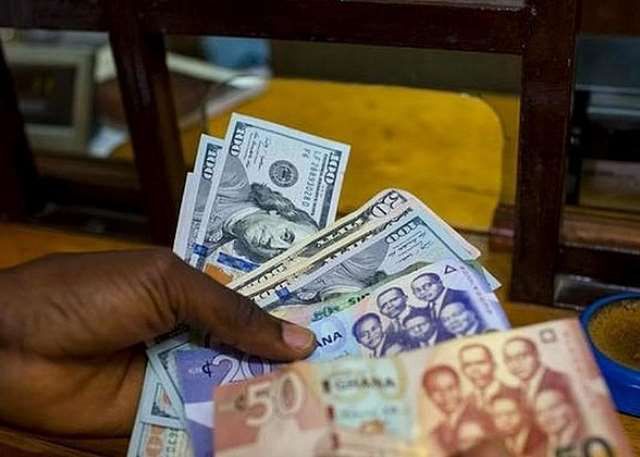The Ghanaian cedi experienced a noticeable depreciation against major international currencies on Thursday, August 28, 2025, reflecting continued volatility in the foreign exchange market. Data compiled from Cedirates.com, a reputable platform tracking currency fluctuations in Ghana, reveals a disparity between interbank rates and those offered by forex bureaus, indicative of market segmentation and potential arbitrage opportunities. On the interbank market, where transactions primarily occur between banks, the cedi traded at an average buying rate of GHS11.04 and a selling rate of GHS11.06 against the US dollar, suggesting a relatively stable exchange rate within the formal banking sector. However, the street-level reality painted a different picture, with forex bureaus quoting significantly higher rates. The average buying rate for the US dollar at forex bureaus was GHS12.20, while the selling rate reached GHS12.50, a premium of approximately 10% over the interbank rates. This discrepancy likely reflects higher operating costs, perceived risks, and potential speculative activities within the forex bureau market.
The depreciation of the cedi extended to other major currencies, including the British pound and the euro. Against the British pound, forex bureaus offered an average buying rate of GHS14.75 and a selling rate of GHS15.45. The Bank of Ghana’s interbank rate for the pound stood at GHS14.89, again highlighting the difference between the interbank and forex bureau markets. Similarly, for the euro, forex bureaus quoted buying and selling rates of GHS12.74 and GHS13.34, respectively, compared to the interbank rate of GHS12.83. This consistent pattern of higher rates in the forex bureau market underscores the challenges individuals and businesses face when accessing foreign currencies outside the formal banking system. The higher rates contribute to increased import costs, potentially fueling inflationary pressures and impacting the affordability of goods and services.
Money transfer operators, a crucial conduit for remittances into Ghana, presented a somewhat more favorable exchange rate landscape. LemFi and Afriex, popular remittance platforms, offered competitive rates for US dollar, British pound, and euro transfers to Ghana. For US dollar remittances, LemFi offered a rate of GHS11.15, while Afriex provided a slightly better rate of GHS11.00. These rates, while still higher than the interbank rates, offered a more cost-effective alternative compared to forex bureaus, especially for Ghanaians receiving money from abroad. For British pound remittances, LemFi quoted GHS15.10, while Afriex offered a marginally lower rate of GHS14.96. Euro remittances through these platforms saw LemFi at GHS12.87 and Afriex at GHS12.81. The relatively competitive rates offered by these platforms highlight the growing importance of digital remittance services in providing accessible and often more affordable foreign exchange options.
The divergence in exchange rates across different platforms and market segments reveals the complexities of the Ghanaian foreign exchange market. The interbank market, characterized by larger transactions and established financial institutions, tends to offer more stable and generally lower exchange rates. However, access to this market is often limited to businesses and individuals with significant financial resources. Forex bureaus, on the other hand, cater to a broader customer base but operate with higher margins, reflecting their unique cost structures and market dynamics. The emergence of digital remittance operators introduces a new dimension to the landscape, offering competitive rates and greater accessibility, particularly for diaspora remittances, a critical source of foreign exchange for Ghana.
For digital subscriptions to international services like Netflix, Spotify, and Apple Music, using Visa and Mastercard incurred exchange rates of GHS12.04 and GHS12.20 respectively. These rates, although higher than the interbank rates, are generally within the range offered by forex bureaus. The slightly higher rate for Mastercard transactions could reflect different processing fees or agreements between the payment processors and the respective platforms. The overall cost of digital subscriptions is therefore influenced by both the subscription fee in the original currency and the prevailing exchange rate at the time of payment. This underscores the hidden costs associated with international transactions and the importance of being aware of the prevailing exchange rates when making such payments.
In summary, the Ghanaian cedi’s performance on August 28, 2025, highlighted the ongoing challenges in the foreign exchange market. The depreciation against major currencies, particularly the US dollar, pound, and euro, underscores the need for continued efforts to stabilize the cedi and manage inflationary pressures. The discrepancies in exchange rates between the interbank market, forex bureaus, and digital remittance operators reflect the fragmented nature of the market and the varying accessibility and costs associated with different channels for accessing foreign currency. The data provided by Cedirates.com offers valuable insights into these dynamics, enabling individuals, businesses, and policymakers to navigate the complexities of the foreign exchange market and make informed financial decisions. The continued monitoring of these exchange rate fluctuations is crucial for understanding the broader economic implications and formulating effective strategies for sustainable economic growth.


